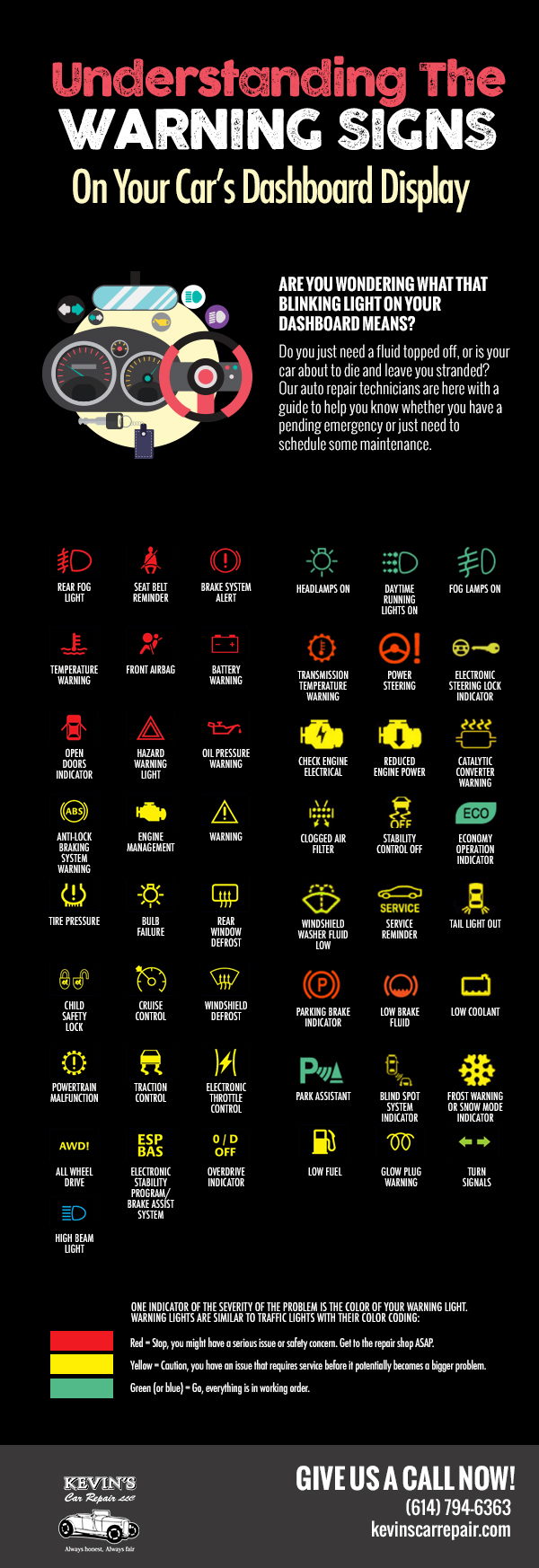Analyzing Your Automobile'S Alert Lights: Their True Implications
Analyzing Your Automobile'S Alert Lights: Their True Implications
Blog Article
Write-Up Produced By-Termansen Dalgaard
When you're behind the wheel, those glowing caution lights on your control panel can be a little bit puzzling. Do you understand what they're attempting to tell you concerning your automobile's health and wellness? Comprehending the relevance of these lights is crucial for your safety and security and the durability of your lorry. So, the next time one of those lights pops up, wouldn't you intend to analyze its message properly and take the needed actions to address it?
Common Warning Lights and Interpretations
Recognize common caution lights in your vehicle and understand their definitions to make certain risk-free driving.
The most typical caution lights include the check engine light, which indicates problems with the engine or exhausts system. If this light begins, it's essential to have your vehicle checked promptly.
The oil stress cautioning light indicates low oil pressure, requiring prompt attention to stop engine damage.
A blinking battery light may recommend a faulty charging system, possibly leaving you stranded if not attended to.
car wax auckland (TPMS) light informs you to reduced tire stress, affecting vehicle stability and fuel efficiency. Ignoring this can bring about unsafe driving conditions.
The abdominal muscle light indicates an issue with the anti-lock stopping system, jeopardizing your capacity to stop swiftly in emergency situations.
Finally, the coolant temperature level advising light warns of engine overheating, which can result in extreme damages if not settled quickly.
Comprehending these common warning lights will certainly help you deal with problems without delay and maintain safe driving conditions.
Importance of Prompt Interest
Recognizing the typical warning lights in your vehicle is just the first step; the relevance of promptly attending to these warnings can not be stressed enough to guarantee your safety and security on the road.
When a warning light illuminates on your dashboard, it's your cars and truck's method of interacting a prospective issue that requires focus. Ignoring these warnings can result in extra serious issues in the future, endangering your safety and potentially costing you much more in repairs.
Trigger focus to cautioning lights can stop failures and accidents. As an example, a blinking check engine light could show a misfire that, if left ignored, can cause damage to the catalytic converter. Addressing this without delay can conserve you from a costly repair service.
Similarly, a brake system alerting light may indicate reduced brake liquid or used brake pads, critical components for your safety when driving.
Do It Yourself Troubleshooting Tips
If you see a caution light on your control panel, there are a couple of do it yourself fixing tips you can attempt prior to seeking expert assistance.
The initial step is to consult your vehicle's handbook to recognize what the particular warning light suggests. Sometimes the problem can be as straightforward as a loose gas cap triggering the check engine light. Tightening up the gas cap may solve the issue.
Another typical problem is a reduced battery, which can set off various advising lights. Examining https://dailyvoice.com/pennsylvania/chester/police-fire/support-surges-for-injured-owner-of-ambler-auto-repair-shop-after-tragic-fire/825402/ for deterioration and ensuring they're protected may fix the trouble.
If a warning light continues, you can attempt resetting it by detaching the car's battery for a few minutes and then reconnecting it. In addition, inspecting your car's fluid levels, such as oil, coolant, and brake fluid, can aid repair advising lights associated with these systems.
Verdict
To conclude, recognizing your car's caution lights is necessary for keeping your vehicle running smoothly and securely. By promptly resolving these signals and understanding what they suggest, you can stay clear of costly fixings and possible failures.
Keep in mind to consult your automobile's handbook for certain details on each cautioning light and take action as necessary to guarantee a trouble-free driving experience.
Keep notified, stay secure on the road!
